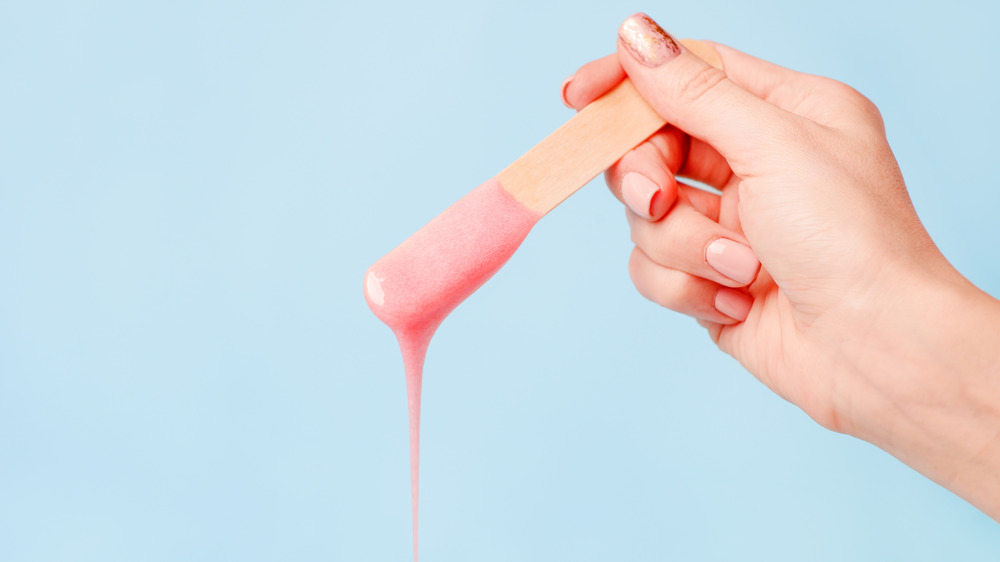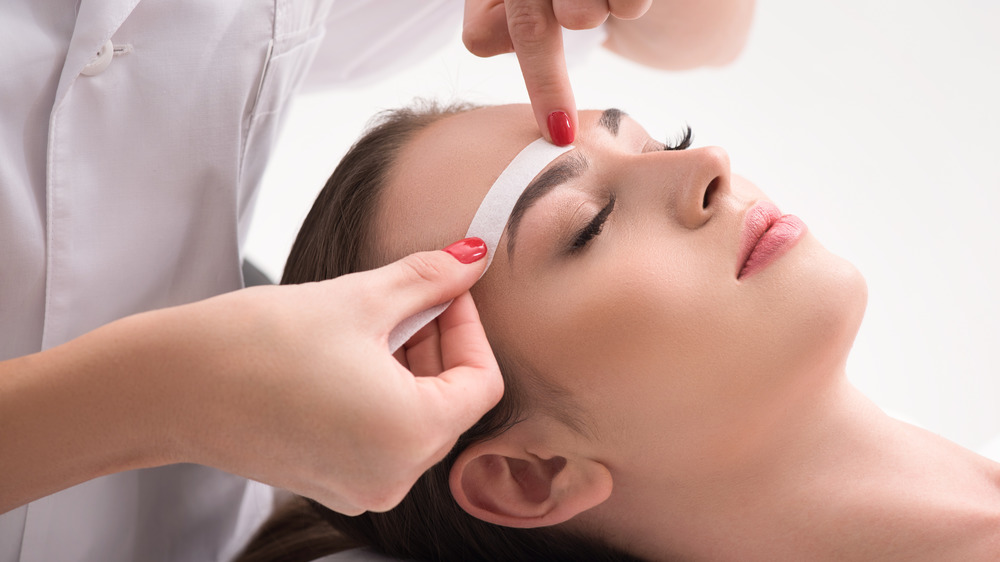The Real Reason You're Breaking Out After You Wax
The dreaded post-wax acne is a real thing. From the inevitable irritation to the products your practitioner puts on your skin after your treatment, your waxing appointment can have you heading home with flawless brows and blemishes at the same time. With various skin irritants and exfoliation, waxing can leave your skin vulnerable to breakouts following your appointment.
Since yanking hot wax off of your face involves the removal of the top layer of your skin, it can leave your cells wide open to absorb whatever you put on them. Bustle explains that the pores are naturally left open after waxing, meaning that lotions, oils and other soothing agents can easily clog them up. So, even if you've thoroughly washed your hands, avoid running your fingers over your newly-waxed skin to avoid adding more dirt and irritants to the area. You should also avoid using products directly after your wax, however, the best course of treatment may be to speak with your esthetician to see which ingredients would be best for your skin type. Lastly, check to ensure that every item that comes near your face has been fully sterilized, the outlet suggests. The fewer germs, the better.
For those with super sensitive skin, using a gentle cleanser on the area following your wax can help remove any impurities that may have gotten trapped beneath the surface of any products you added as well.
Make sure to prep your skin before your wax
But, it's not just the after effects of your wax that can lead to blemishes. Your prep work can either make or break your post-treatment appearance. Byrdie suggests gently exfoliating prior to your appointment so that you can remove dead skin cells, oils and any other irritants from your face. The key here is keeping everything that you can as clean as possible.
Using a new wax applicator each time and opting for a tea tree-based wax can also help negate post-wax breakout as well. Ensuring that each applicator that touches your face is sterile, this method is a must for salon waxes and important for at-home treatments as well. Byrdie notes that tea tree-based wax works as an antiseptic that kills off excess bacteria that may spur breakouts down the road.
As for what to apply when the irritation has somewhat calmed down? It's best to ditch the oil-based products until your skin is less inflamed, the outlet notes. These can clog pores and thus bring about those pesky white bumps. But, another little known way to reduce these occurrences involves your routine. "Receiving a wax every four to six weeks to help the area adjust to it can help prevent a reactionary breakout. Any time longer than six weeks and you're starting the process all over again. Take care of the skin prior to the wax by exfoliating and leave the area alone afterward," explains esthetician Shelby Galvan.
Your waxing appointment doesn't have to accompany a break out—just take care of your skin and find the right products for you!

